First Term: Getting to know English newspapers & reading hard news articles |
Theme of textbook unit: Animals in danger |
Objectives |
Main tasks |
-
Getting acquainted with an English newspaper
|
-
to learn different sections in a newspaper: news (international, national and local), opinions, lifestyle, entertainment, business, etc. and their different purposes (to inform, to entertain, to persuade, etc.)
-
to use a loud voice and make eye contact with the audience when doing presentations
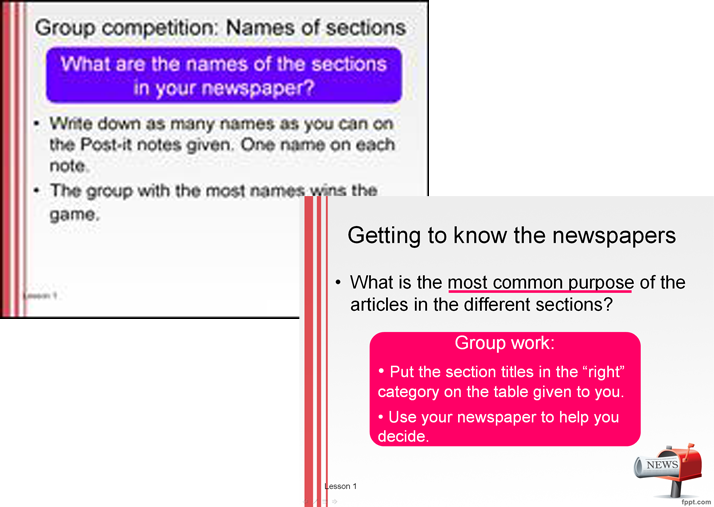
|
-
Students conduct a discussion on the usual purposes people have for reading newspapers.
-
They have a competition to name the different sections in newspapers.
-
Students work in groups to match newspaper texts from different sections with their writing purposes.
-
They work in groups to prepare a presentation to introduce the newspaper section they find most interesting to the class with the help of the provided framework.
|
-
Learning different sections in English newspapers
|
-
to learn the content and features of some sections in a newspaper
-
to give a brief description of a newspaper section
-
to use a loud voice and make eye contact with the audience when doing presentations
|
-
Students do a group presentation about the newspaper section they find most interesting while their audience jot notes about their presentation.
-
Students write a brief description of the newspaper section they find most interesting.
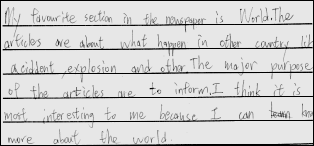
|
-
Learning common types of texts in English newspapers
|
-
to recognise different text types in newspapers (e.g. news articles, feature articles, columns and letters to the editor) by their text features
-
to use a loud voice and make eye contact with the audience when doing presentations
|
-
Several students conduct an individual presentation & teachers’ feedback: A few students give a brief presentation on the section in the newspaper they find most interesting.
-
Students work in groups to conduct a scavenger hunt to look for examples of different text types in newspaper.
|
-
Discussing & summarising hard news articles
|
-
to identify subjects of news articles from headlines
-
to differentiate hard and soft news
-
to summarise key information of news articles using 5Ws Organiser
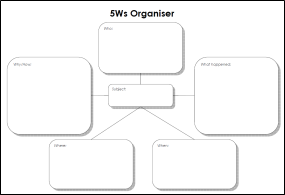
|
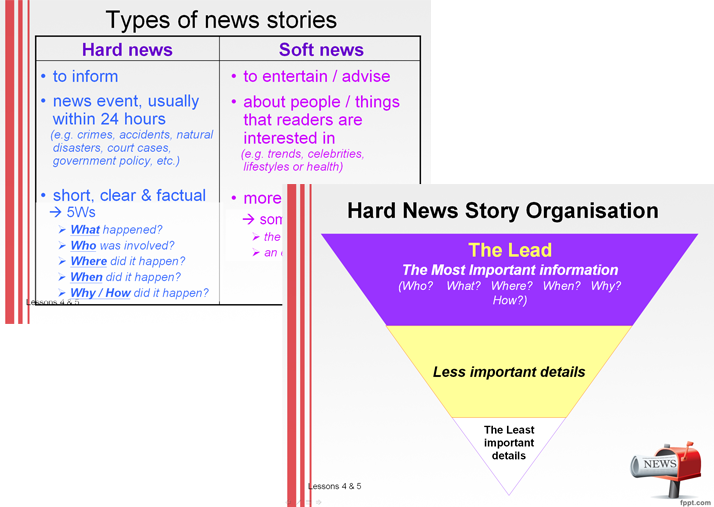
-
Students work in groups to read for and arrange key information of some news articles in their 5Ws Organisers.
-
Students discover the text structure of news articles
-
Students work in group to summarise the content of a news story article.
|
-
Inferring word meaning using linguistics & contextual clues
|
-
to use linguistic and contextual clues to infer word meaning in context
-
to recognise & pronounce vocabulary related to crimes and police investigation
|
-
Students work in groups to infer meaning of unfamiliar words in an article.
-
Students teach each other the meaning and pronunciation of an assigned new word creatively (e.g. drama, reading aloud, dance).
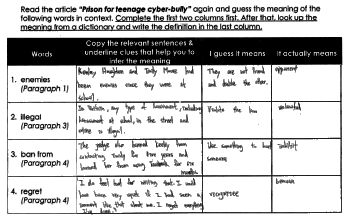
|
- Responding to a news story
|
-
to use linguistic and contextual clues to infer word meaning in context
-
to express reactions towards an event with adjectives about feelings
-
to present views with suitable reasons
-
to summarise and respond to a news event
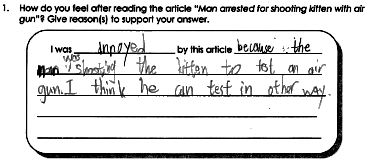
|
-
In pairs, students infer meaning of adjectives for describing feelings towards a news report in contexts.
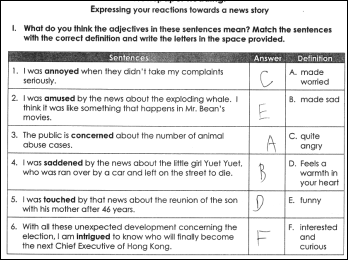
-
Students share their feelings towards the hard news article on “Man shot kitten”.
|

